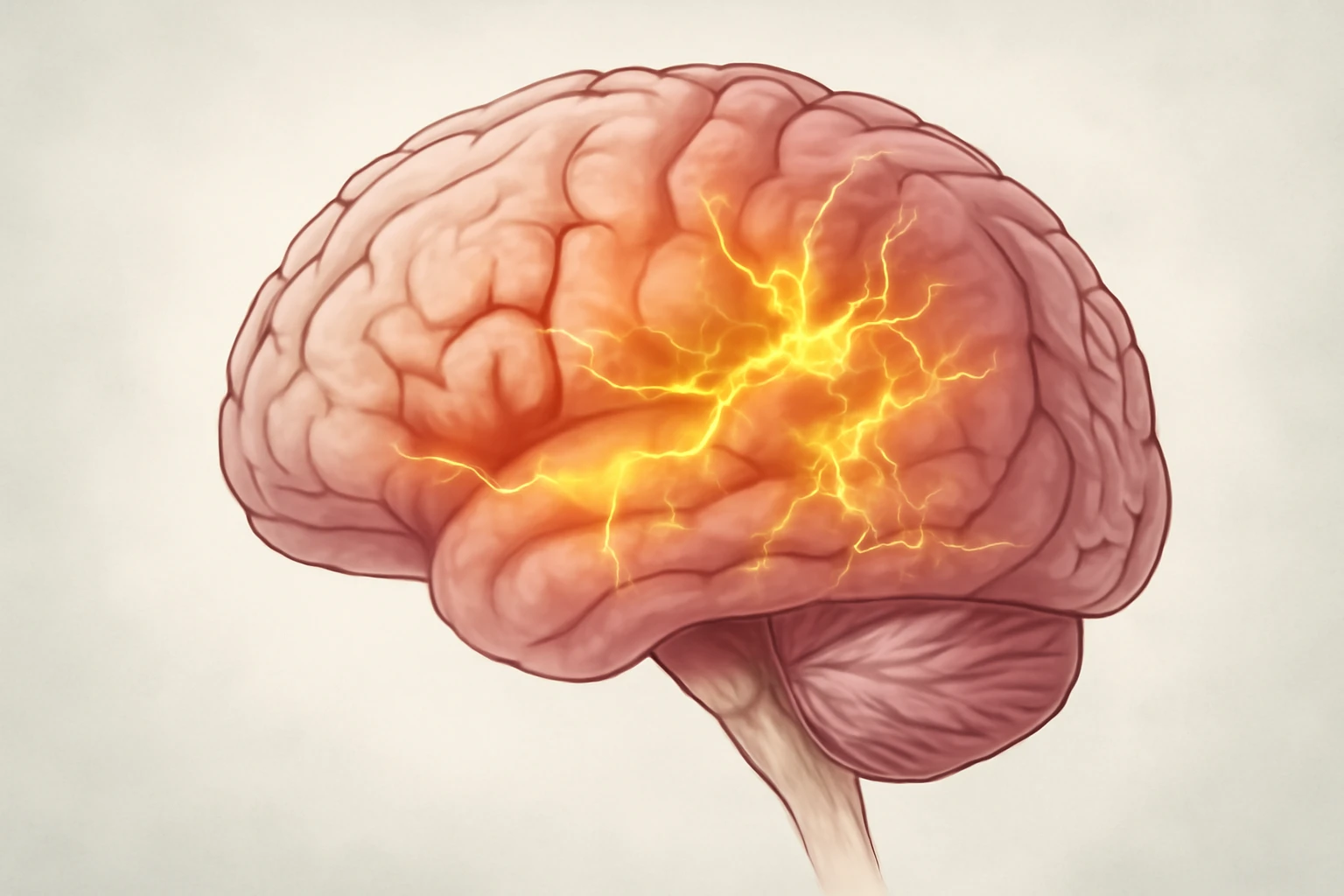How to Identify and Manage Seizures: A Parent’s Guide
Seizures: Causes and Symptoms
Seizures are caused by abnormal electrical activity in the brain, disrupting normal brain function. This electrical disturbance can affect how a person behaves, moves, or feels. When the brain’s electrical system is out of sync, it can lead to a range of symptoms, depending on which part of the brain is affected.
Not all seizures are linked to epilepsy. While epilepsy involves recurrent, unprovoked seizures, other factors can trigger one-time or occasional seizures. These triggers may include:
- High fever
- Head injury
- Infections
- Certain medications
It is important to understand the cause of a seizure to determine the best treatment approach.
Common Causes of Seizures
Seizures can be caused by a variety of factors, ranging from medical conditions to external triggers. Understanding these causes is crucial for parents, as it helps in recognizing potential risks and determining the right approach for treatment and prevention.
Medical Conditions Linked to Seizures
Certain medical conditions can lead to seizures. For example, high fever, especially in young children, can trigger febrile seizures. In some cases, seizures may be caused by brain tumors or infections like meningitis or encephalitis. Additionally, epilepsy, a neurological disorder characterized by recurrent, unprovoked seizures, is another common cause of seizures. These medical conditions require proper diagnosis and treatment to manage the seizures effectively.
External Triggers of Seizures
Seizures can also be provoked by external factors. A common trigger is a high fever, especially in children. Stress, exhaustion, or emotional distress can also increase the likelihood of seizures in some individuals. In addition, environmental factors such as flashing lights or patterns may provoke seizures in individuals with photosensitive epilepsy. Alcohol withdrawal can be another trigger, particularly in individuals who have been drinking heavily for an extended period. It is essential to be aware of these triggers, as they can be managed or avoided to reduce the risk of seizures.
Recognizing Seizure Symptoms
Seizures can manifest in various ways, and recognizing their symptoms is essential for parents to ensure timely intervention and care. Seizures can be physical or non-physical, and understanding these signs will help in identifying when a child might be having a seizure.
Physical Symptoms of Seizures
- Convulsions: Sudden, involuntary movements of the body or limbs, often accompanied by shaking or twitching.
- Muscle Jerking: Rhythmic movements of the muscles, sometimes affecting only one part of the body.
- Body Rigidity: The child’s body may stiffen or jerk uncontrollably, leading to difficulty moving.
- Loss of Muscle Control: The child may lose control over their muscles, causing them to fall or hurt themselves.
Non-Physical Symptoms
- Staring Spells: The child may appear to be daydreaming or zoned out and not respond to their name being called.
- Confusion: The child might seem disoriented or have trouble understanding their surroundings.
- Temporary Loss of Awareness: The child may lose awareness of their surroundings or temporarily stop responding to stimuli.
How Seizures Are Diagnosed
Diagnosing seizures involves a thorough evaluation to determine the cause and type of seizure. An accurate diagnosis is crucial to understanding the underlying cause and ensuring proper treatment. The diagnostic process typically includes a review of the child’s medical history, physical and neurological exams, and may involve specialized tests like EEG and brain imaging.
The Role of Medical History and Neurological Exams
The first step in diagnosing seizures is gathering detailed information about the child’s medical history. This includes asking about any previous health conditions, family history of seizures, and details about the seizure episode itself, such as its onset, duration, and symptoms. The doctor will also perform a physical and neurological exam to assess the child’s overall health and neurological function. This helps identify any physical conditions that may contribute to the seizures, such as brain injury or infections.
Tests for Seizures
- EEG (Electroencephalogram): A test that measures electrical activity in the brain and can help detect abnormal brain waves that indicate the presence of seizures.
- Brain Imaging: Techniques like MRI or CT scans are used to detect structural issues, such as brain tumors or areas of brain damage, which could be causing seizures.
Preventing Seizures: What Parents Can Do
Managing seizures often requires proactive steps to reduce the risk of future episodes. By making lifestyle adjustments and creating a safe environment, parents can significantly decrease the chances of seizures occurring. The key factors in prevention include stress management, ensuring adequate sleep, and avoiding known triggers.
Managing Triggers and Stress
- Stress: Identify and manage stressors by creating a calm, predictable environment, encouraging relaxation techniques, and teaching coping strategies.
- Environmental Factors: Overheating or flashing lights can trigger seizures. Parents should be mindful of these triggers and take preventive measures to avoid them.
The Role of Sleep and Routine
- Sleep Routine: Establish a consistent bedtime to ensure the child gets adequate rest each night. Poor sleep or irregular patterns can increase seizure risk.
- Structured Routine: A structured daily routine can reduce stress-related seizures and promote stability. Regular meals, physical activity, and a calming evening routine can enhance sleep hygiene and help prevent seizures.
Seizure Treatment and Management: Options and Approaches
Seizures can be managed with a variety of treatment options depending on their severity, frequency, and underlying causes. The primary treatment involves anti-seizure medications, but other interventions, such as dietary changes and surgical treatments, may be considered when medications prove ineffective. A tailored treatment plan is crucial to controlling seizures and improving the quality of life for individuals affected by them.
Medications for Seizures
- Phenytoin: A commonly prescribed medication used to stabilize brain activity and prevent seizures.
- Valproate: Another frequently used medication that helps manage seizures by inhibiting abnormal brain activity.
- Levetiracetam: Commonly prescribed for various seizure types to help control abnormal electrical brain activity.
Anti-seizure medications remain the mainstay of treatment for most individuals with seizures. These drugs stabilize the brain’s electrical activity to prevent seizures. While these medications can be highly effective, finding the right medication and dosage may take time. It’s important to monitor for side effects, such as dizziness, fatigue, or mood changes, and to adjust the treatment plan as needed.
Dietary and Surgical Interventions
If seizures are resistant to medications, other treatments may be explored. One option is the ketogenic diet, a high-fat, low-carbohydrate diet known to reduce seizures in some individuals, especially those with epilepsy. This diet alters the body’s metabolism, producing ketones that can help stabilize brain activity.
Surgical interventions may also be considered for individuals with refractory epilepsy. Surgery typically involves removing or disconnecting the part of the brain responsible for seizures. These interventions are pursued when medications do not effectively control seizures, and a thorough evaluation by a specialist is required to determine the best course of action.
Preventing Seizures: Key Steps for Parents
Managing seizures effectively involves taking proactive steps to reduce the risk of future episodes. By making lifestyle adjustments and creating a safe environment, parents can significantly decrease the chances of seizures occurring. Key prevention strategies include stress management, ensuring adequate sleep, and avoiding known triggers.
Managing Triggers and Stress
- Stress: Identify and manage stressors by creating a calm, predictable environment, promoting relaxation techniques, and teaching coping strategies.
- Environmental Factors: Overheating and flashing lights can trigger seizures. Parents should be mindful of these environmental factors and take steps to avoid them.
The Role of Sleep and Routine
- Sleep Routine: Establish a consistent bedtime and ensure the child gets enough rest each night. Poor sleep or irregular sleep patterns can increase seizure risk.
- Structured Routine: A stable daily routine can reduce stress-related seizures and promote stability. Regular meals, physical activity, and a calming evening routine all contribute to better sleep hygiene and seizure prevention.
- Seizures can be caused by head injuries, infections, or conditions like high fever or brain tumors.
- External factors such as fever or alcohol withdrawal can trigger seizures.
- Seizure symptoms may include convulsions, unusual sensations, and staring spells.
- Seizures can be focal or generalized, affecting specific brain areas or the entire brain.
- Diagnosis includes medical history review, physical exams, and may involve EEG or brain imaging.
- Anti-seizure medications are the primary treatment for most seizures.
- Surgical options and ketogenic diets are for patients with epilepsy not controlled by medications.
- Do not restrain the person or place anything in their mouth during a seizure.
- If a seizure lasts more than 5 minutes, seek immediate medical help.
- Lifestyle changes such as managing stress, sleep, and avoiding triggers can help manage seizures.
- What are the most common causes of seizures? Seizures can result from head injuries, infections, high fever, or medical conditions like brain tumors or epilepsy.
- How do I know if my child is having a seizure? Seizure symptoms can include convulsions, muscle jerking, or staring spells. Some seizures also cause confusion or temporary loss of awareness.
- Is epilepsy the only cause of seizures? No, not all seizures are linked to epilepsy. They can also be triggered by high fever, infections, or external factors like stress or alcohol withdrawal.
- Can seizures be treated? Yes, most seizures can be managed with anti-seizure medications. For difficult-to-control seizures, surgical options or dietary changes, like the ketogenic diet, may help.
- How are seizures diagnosed? Seizures are diagnosed through a detailed medical history, physical exams, and tests like EEG or brain imaging to identify their cause.
- Can lifestyle changes help prevent seizures? Yes, managing stress, getting enough sleep, and avoiding known seizure triggers can help reduce the risk of seizures.
- What should I do if my child has a seizure? Ensure their safety by not restraining them or putting anything in their mouth. If the seizure lasts more than 5 minutes, seek immediate medical help.
- What are the signs that a seizure may be triggered? Common triggers include stress, exhaustion, flashing lights, and high fever. Parents should watch for these and try to avoid them when possible.












